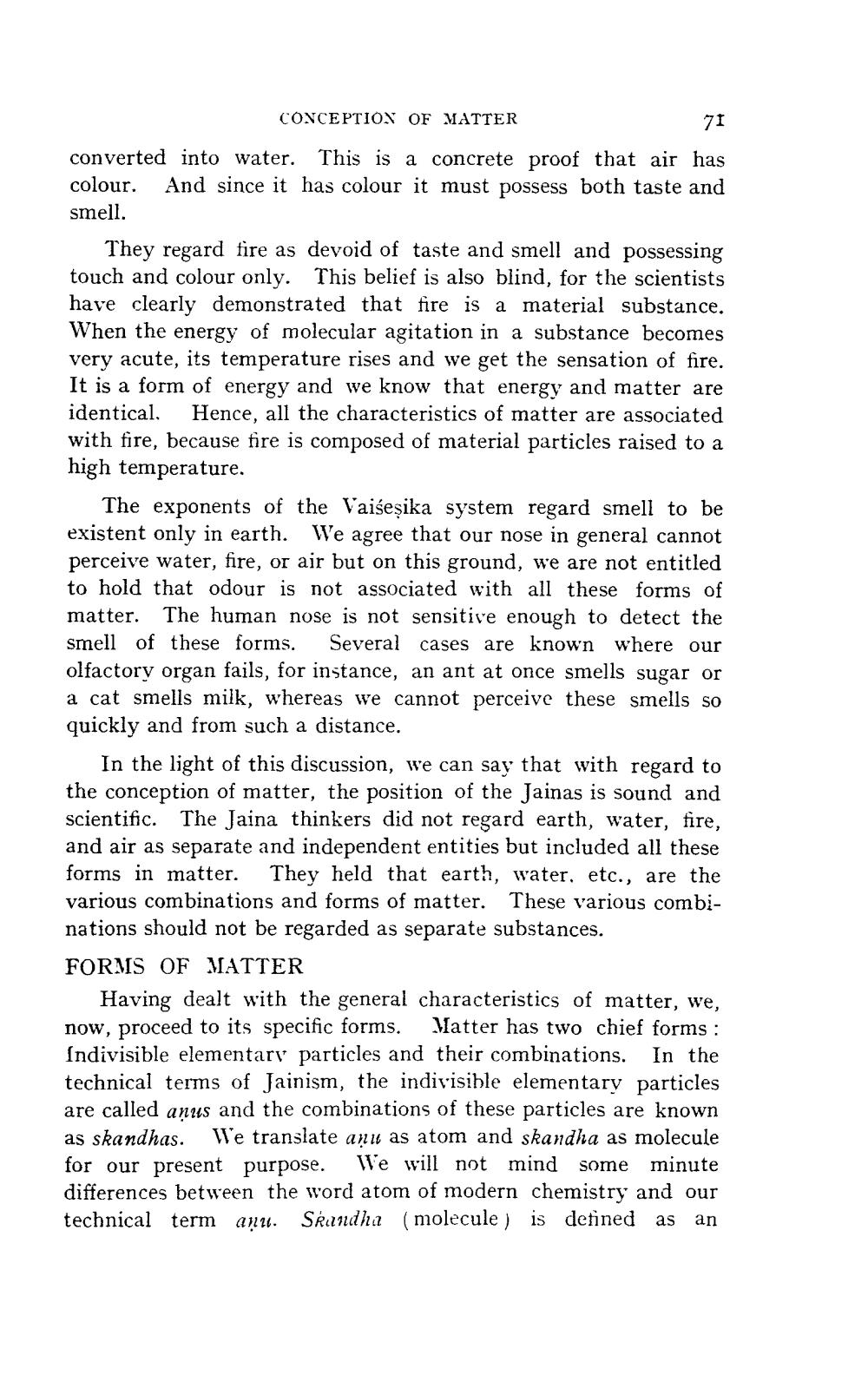________________
CONCEPTION OF MATTER
71
converted into water. This is a concrete proof that air has colour. And since it has colour it must possess both taste and smell.
They regard fire as devoid of taste and smell and possessing touch and colour only. This belief is also blind, for the scientists have clearly demonstrated that fire is a material substance. When the energy of molecular agitation in a substance becomes very acute, its temperature rises and we get the sensation of fire. It is a form of energy and we know that energy and matter are identical. Hence, all the characteristics of matter are associated with fire, because fire is composed of material particles raised to a high temperature.
The exponents of the Vaiseșika system regard smell to be existent only in earth. We agree that our nose in general cannot perceive water, fire, or air but on this ground, we are not entitled to hold that odour is not associated with all these forms of matter. The human nose is not sensitive enough to detect the smell of these forms. Several cases are known where our olfactory organ fails, for instance, an ant at once smells sugar or a cat smells milk, whereas we cannot perceive these smells so quickly and from such a distance.
In the light of this discussion, we can say that with regard to the conception of matter, the position of the Jainas is sound and scientific. The Jaina thinkers did not regard earth, water, fire, and air as separate and independent entities but included all these forms in matter. They held that earth, water, etc., are the various combinations and forms of matter. These various combinations should not be regarded as separate substances. FORMS OF MATTER
Having dealt with the general characteristics of matter, we, now, proceed to its specific forms. Matter has two chief forms: Indivisible elementary particles and their combinations. In the technical terms of Jainism, the indivisible elementary particles are called anus and the combinations of these particles are known as skandhas. We translate anui as atom and skandha as molecule for our present purpose. We will not mind some minute differences between the word atom of modern chemistry and our technical term anu. Skandha (molecule ) is defined as an




